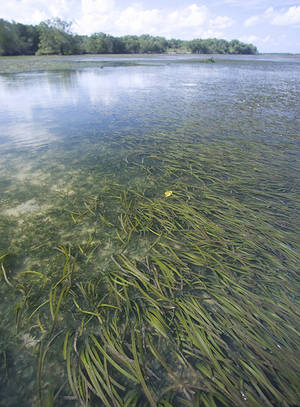Seagrass meadows in the Mediterranean could be the oldest living things on the planet, dating back hundreds of thousands of years.
 As well as reproducing sexually like all flowering plants, seagrasses have the habit of spreading by dividing and cloning themselves, and the Mediterranean species, Posidonia oceanica, is no exception. DNA analysis of genetically identical swathes of seagrasses, in areas between Spain and Cyrpus, has revealed their great age - the oldest patch found off the Spanish Island of Formentera is estimated to be 200,000 years old - it's been sitting around on the seabed, steadily and slowly dividing for longer than modern human beings have walked the earth.
As well as reproducing sexually like all flowering plants, seagrasses have the habit of spreading by dividing and cloning themselves, and the Mediterranean species, Posidonia oceanica, is no exception. DNA analysis of genetically identical swathes of seagrasses, in areas between Spain and Cyrpus, has revealed their great age - the oldest patch found off the Spanish Island of Formentera is estimated to be 200,000 years old - it's been sitting around on the seabed, steadily and slowly dividing for longer than modern human beings have walked the earth.
This shows that seagrasses are able to adapt to changing conditions that have taken place in the past, but doesn't necessarily mean they will cope with the changes human activities are throwing at them, because the rates of change today of things like water temperature and pH are so much faster than is has been in the past.
Find out more:
Duarte (2012). Implications of extreme lifespan in clonal organisms: millenary clones in meadows of threatened seagrass Posidonia oceanica.
PLoS ONE (Open Access)










Comments
Add a comment